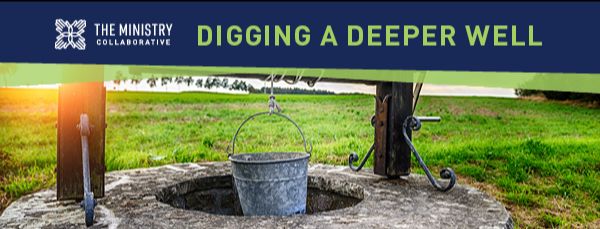December is no sooner over than January is upon us, trailing annual meetings and new officer trainings with it. Even if your church board turnover keeps a different calendar, this is always a good moment to think about how to do that turnover well.
How a board begins its work – and how new members are welcomed – will set the expectations and the tone for the group going forward. Too many “New Board Member Orientation Meetings” begin with the introduction of a large three-ring binder full of papers about rules, protocols, and budgets. There might be a perfunctory “introduce yourself” activity or a three-minute devotional. But soon enough you will climb into that binder and start planning the work of the board – the responsibilities, the agendas, the pressing issues! – for the year ahead.
Or you could begin by sounding a tone of spiritual depth, forming a sense of community, and modeling ways of working together to discern God’s activity in your midst.
One good way to introduce board members to one another (and not just new members, but the whole board) is to ask everyone to share everything they know about their baptism. But what if you were baptized at four months and have no memory? Do you know where you were baptized? Who was present? Where were you living? Were your parent or parents regularly participating in a church? Everyone usually knows something about their baptism that can serve as an introduction to who they are.
Another good way to introduce board members to one another (and again, not just the new members) is to create a simple history timeline of the congregation and use that as a sign-in sheet. You could draw it on butcher-block paper, or on a blackboard or whiteboard, if you have one of those. Mark key dates in the life of the congregation on the timeline from founding to the present day. When members enter the room, have them sign in according to when they first got connected to the church. Then have them introduce themselves, from earliest sign-in forward. You will be surprised how well this jumbles up any sense of seniority in the room—and quickly forms a new group around shared history.
Finally, to introduce members to the depth of discernment expected on the board, you could discuss a poem or a scripture text. Imagine the reset in expectations, if a new board member asks, “When do we talk about the work?” and you are able to say, “This is the work.”
The following poem, in which Billy Collins introduces his students to the work of poetry, might offer an introduction to the work of church boards as well.
Introduction to Poetry
I ask them to take a poem
and hold it up to the light
like a color slide
or press an ear against its hive.
I say drop a mouse into a poem
and watch him probe his way out,
or walk inside the poem’s room
and feel the walls for a light switch.
I want them to waterski
across the surface of a poem
waving at the author’s name on the shore.
But all they want to do
is tie the poem to a chair with rope
and torture a confession out of it.
They begin beating it with a hose
to find out what it really means.
Scripture speaks constantly and consistently about how welcoming is a sign of faithfulness. This extends to welcoming new board members into the important work ahead. Scripture’s welcome can be summed up in Romans 15:7: “Welcome one another, therefore, just as Christ has welcomed you, for the glory of God.”
Everything we do should show that we follow Jesus and we glorify God. This certainly applies to new board member orientation, which really calls for so much more than a three-ring binder. Or a rope and a hose.
What is the work that Collins wants his students to do? Why does he introduce them to that work by invoking color slides, and hives, and rooms and mice and waterskiing?
Why do we sometimes want to get out a rope and a hose when reading poetry?
What is the work that you want your new lay leaders to do? How will you introduce them to that work?
What false ideas of the work might you have to gently dispel?
How can you welcome one another to the work in a way that truly glorifies God?








No Comments